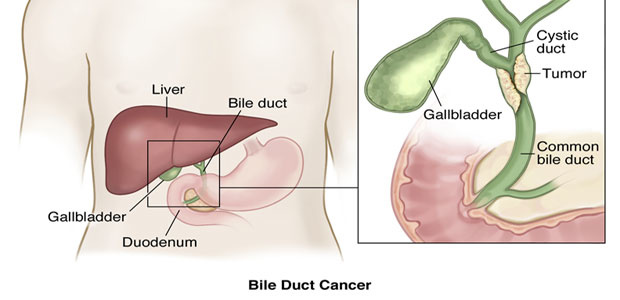
What is bile duct carcinoma?
Bile duct carcinoma originates from the bile duct, which includes malignant tumor located from hepatic hilar region to the lower end of common bile duct.
According to the position of tumor, bile duct carcinoma can be divided into two categories: intrahepatic bile duct carcinoma and extrahepatic bile duct carcinoma; furthermore, extrahepatic bile duct carcinoma can also be divided into upper bile duct carcinoma (bile duct carcinoma of porta hepatis), middle bile duct carcinoma and lower bile duct carcinoma, and among the three, bile duct carcinoma of porta hepatis is mostly seen.
What is the incidence rate of bile duct carcinoma?
Bile duct carcinoma is a kind of rarely seen cancer. There are about 2000-3000 new cases diagnosed each year and about 0.01%-0.46% among every 100,000 people would suffer from bile duct carcinoma.
And compared to other regions, the incidence rate of bile duct carcinoma in Southeast Asia is relatively high. The incidence rate would also increase as age goes by and the chances of incidence in male is slightly higher than that of female, while both of the incidence rates have an increasing trend in recent years.
What are the causes of bile duct carcinoma?
The causes of bile duct carcinoma have not been defined yet, but it is believed that the following factors like chronic inflammation of biliary tract, calculus of bile duct or gallbladder stone, liver fluke, cystic malformation of the bile duct, may impose certain functions for triggering bile duct carcinoma.
Chronic inflammation of biliary tract: Long term chronic inflammation stimulation is the foundation of bile duct carcinoma occurrence, because it is found in clinical that all diseases related to bile duct carcinoma would lead to chronic inflammation of bile duct.
Calculus of bile duct and gallbladder stone: Based on the reports, 20-57% of bile duct carcinoma patients also suffer from gallstone or gallbladder stone. Therefore, it is believed that chronic inflammation of gallstone may be a carcinogenic agent.
Cystic malformation of bile duct (or congenital cholangiectasis): Congenital biliary duct cyst can easily turn into cancerous change. When pancreas becomes abnormal, pancreatic fluid shall reversely flow into bile duct and this causes cancerous of bile duct epithelium, which is the main cause for cancerous change.
Liver fluke (Chinese liver fluke): At Southeast Asia regions, people eat fresh fish which may cause some infections to the biliary tract, and fibrosis surrounded around the bile duct or bile duct proliferation. So liver fluke is one factor causing bile duct carcinoma.
What are the symptoms of bile duct carcinoma?
What are the examination methods for bile duct cancer?
What are the treatment methods for bile duct carcinoma?
What are the nursing methods for bile duct carcinoma?
Living nursing
Go to hospital for periodical review;
Life shall be regular;
Work shall be combined with rest reasonably;
Do some sports properly, for example: taking a walk, doing breathing exercise;
Diet nursing
Eat more those food that possess anti-cancer function, like buckwheat, sun-flower seed, tofu;
Eat more anti-infection and anti-cancer foods, like mung bean, rutabaga, bitter melon, lily;
Eat some food with the function of purgation, like fig, walnut, sesame etc.